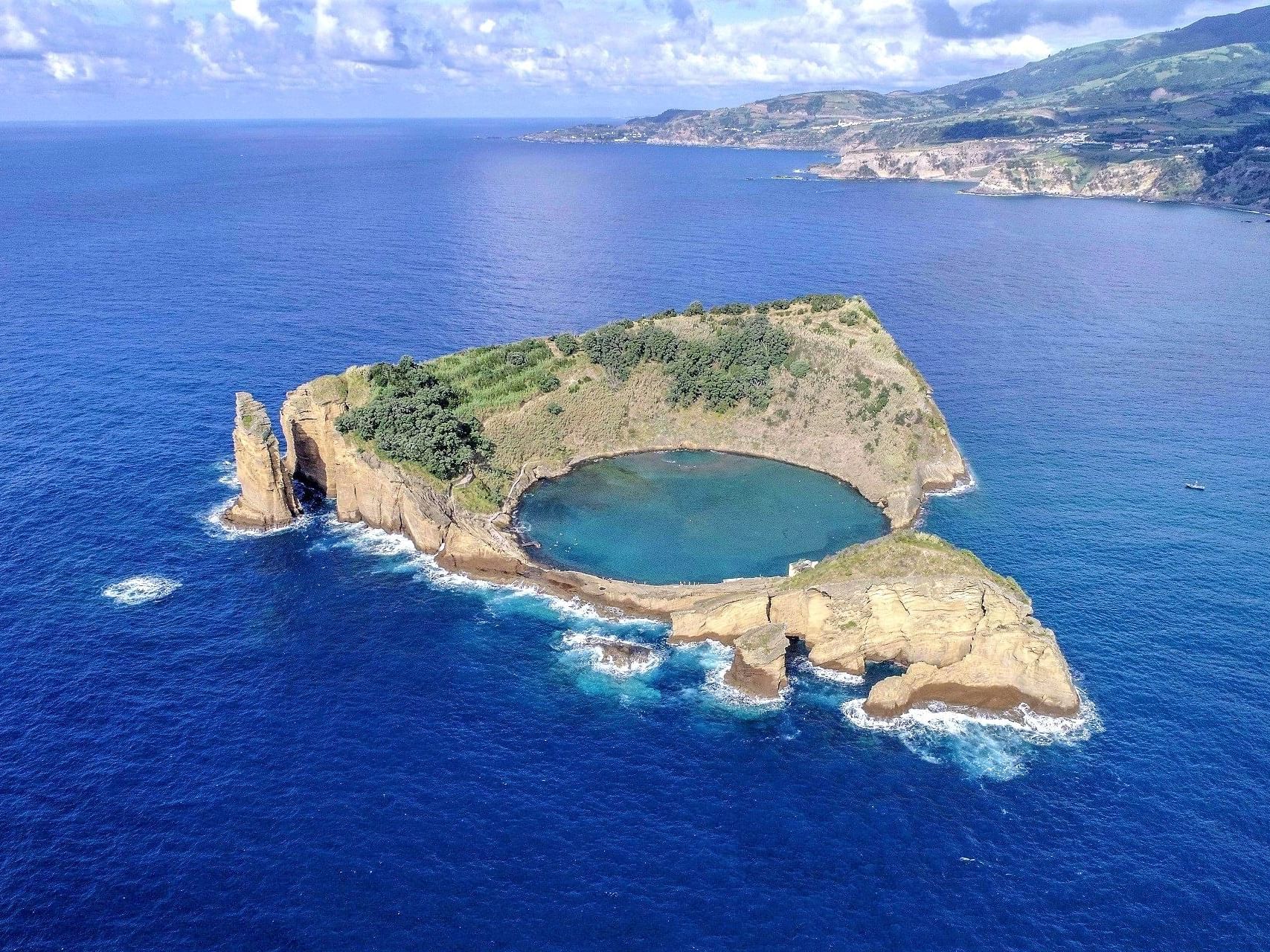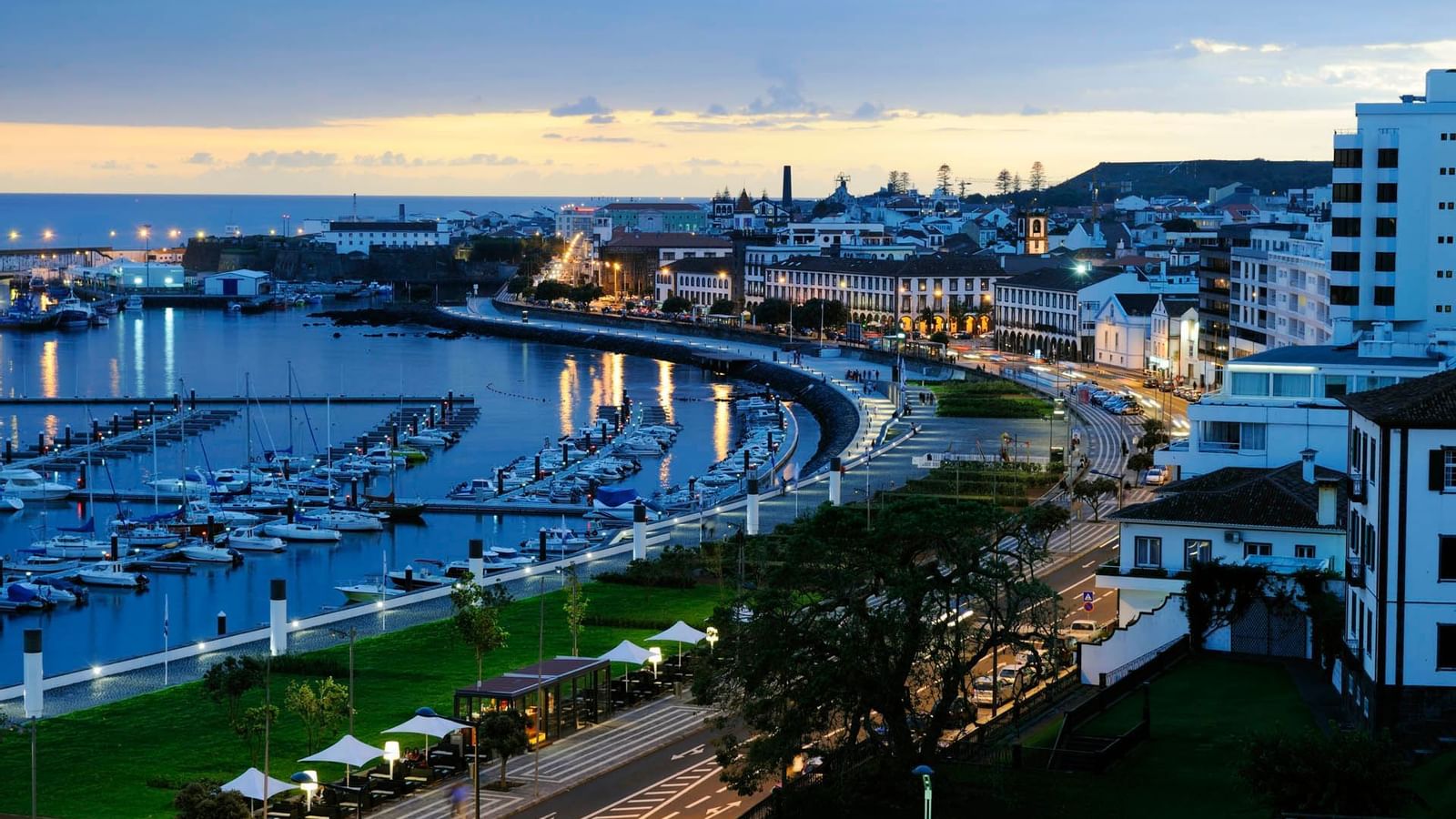Terra Nostra Park
In the heart of São Miguel Island, inside of Furnas Valley, Parque Terra Nostra dates back to 1775, when American merchant Thomas Hickling fell in love with Furnas and decided to create the perfect relaxation haven which still seduces every visitor today.
Aside from its large Camellia Collection and other rare species, Terra Nostra Garden is known worldwide for its thermal pool, filled with volcanic water from the hot springs at a steady 40°C (104°F), rich in iron and other minerals highly beneficial for the skin and creating complete and unparalleled relaxation.
At Parque Terra Nostra, you can also find some architectural treasures, romantically inspired, such as the Avenue of the Ginkgo Biloba and lose yourself in pure magic. The Garden is free for guests of Terra Nostra Garden Hotel, where one can also experience the unforgettable Thermal Bath up until 10 PM.
Parque Terra Nostra is a world reference for plant lovers and has already been awarded by Condé Nast Traveller in the category of "Best Green Retreats."
Click here to know more.
Trekking
Whether you are a lover of quiet walks or an adrenalin junkie, the Azores have more than 60 hiking trails with all the conditions for walking safely. Venture out and discover unique landscapes between paths totally wrapped in Nature.
The trails of the Azores are a network of footpaths classified by the Regional Government of the Azores to ensure the safety and tranquillity of the walkers. Divided into three levels of difficulty - easy, medium and hard - the network is suitable for various ages and levels of fitness. Many of the classified footpaths take advantage of the single tracks that people have used for centuries for day-to-day travel, carrying goods and moving cattle. This ancestral wisdom in creating short cuts across the territory is now exploited by tourists to get to know the different perspectives and details of the Azores islands’ scenic treasures, since they link almost every corner of each island, both by the seashore and in the mountains.
The mild temperature of the Azorean climate enables you to explore the network of trails in any season. It all depends on the experience you want. Walking during the winter means finding lusher greens, waterfalls and faster flowing streams; a walk in the spring and summer brings an invasion of scents and colourful flowers. But the famous Azorean mist can arise at any time. And as fast as it comes, wrapping in mystery the barely glimpsed outlines, it disappears, opening up new horizons.
www.trails.visitazores.com

Surf (São Miguel)
São Miguel is the biggest island and home to the most surfers. It is the only island in the chain with north-facing beachbreaks at Ribeira Grande and probably has the greatest variety of surf spots. Both the western and eastern ends of São Miguel are very cliffy as the land drops away sharply from the volcanic peaks that used to be two separate islands. This means the centre of the island is lower and allows for the beaches to form on the north and south coasts.
Big waves in heavy water situations characterise the north coasts of the Azores and São Miguel has its share, but few are surfed, and many are at the base of cliffs and only accessible by boat Ð Baixa de Viola being the exception. Rabo de Peixe now breaks inside the harbour wall that destroyed a better reef outside, but it is still a focal point for winter swells thanks to ease of access and ride compared to the many unridden breaks visible from the cliffs. Mosteiros has the only regularly surfed breaks out west and nothing much happens on the SW coast until Ponta Delgada. Populo is just that, perfectly named as the city beach where everyone learns to surf.
With a wide swell window and adaptable sandbanks, it gets especially good on summer S swells. The south coast has way more accessible breaks and fewer surfers riding them, all the way out to the heavy seawall breaks at Ribeira Quente. This island is pretty flexible and should be considered a year-round destination with its mix of big swell reefs and exposed summer beachbreaks.

Islet of Vila Franca do Campo
A small paradise that is off the shore of a larger one - the island of São Miguel - the islet of Vila Franca do Campo provides an exciting day for anyone who visit it.
Situated opposite the town of Vila Franca do Campo, about 1km from the coast, the islet is a result of the crater of an ancient submerged volcano, and is one of São Miguel’s main tourist attractions, particularly since an event in the Red Bull Cliff Diving world championship was held here.
www.visitazores.com






